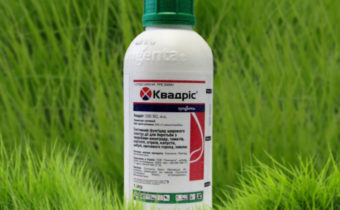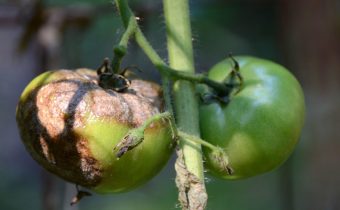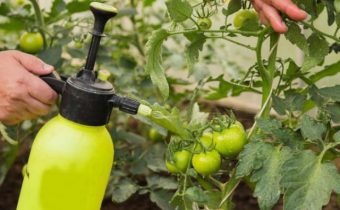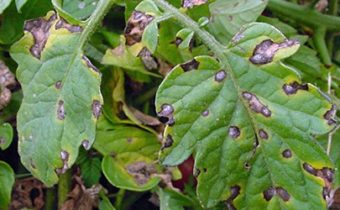The use of fungicides for tomatoes
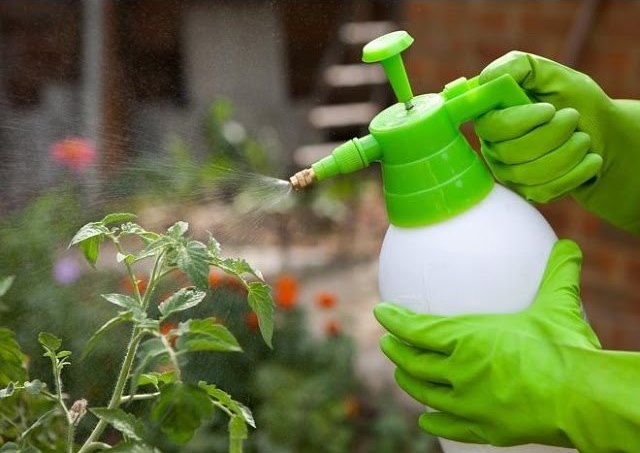
Infection with many diseases of tomatoes occurs due to the spread of pathogenic spores of fungi or infectious microorganisms. Chemical fungicides are capable of inhibiting their vital activity.
They are designed to neutralize the vital activity of pathogens on plant surfaces as well as penetrating into the cells of tomatoes, effectively combating various diseases.
Purpose of fungicides
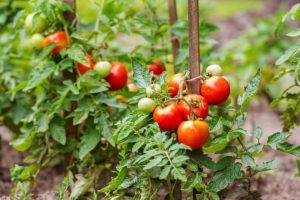
The main purpose of chemical and biological fungicide preparations is:
- in prevention, which prevents the development of pests before the period when they can cause significant damage to the culture. Prophylactic agents have a protective effect, form a protective film on the surface of the culture, preventing its infection. Such drugs are not able to affect the vital activity of pathogens inside tomatoes. Therefore, prophylactic fungicides should be used before the mass infection of tomatoes;
- in treatment that eliminates endemia after pathogens enter plant cells. Therapeutic drugs affect opportunistic mycoses and their hibernating spores. The action of treating agents causes the death of pathogens even after they enter the cells;
- in immunization of tomatoes, during which the disinfectant of pathogens enters the cells, leads to changes in metabolism, preventing the defeat of pathogens and harmful microorganisms. Systemic elicitors exert their activity only in the tissues of tomatoes, stimulate the formation of elements in the plants themselves, which have a detrimental effect on pathogens.
Varieties
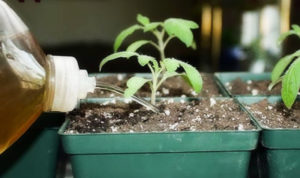
Biological and chemical drugs inhibitors of pathogenic microorganisms are divided into:
- true contact drugs that are toxic to pathogens on the surface of the plant. Substances from aldehydes and quinones directly affect the complex of biochemical transformations for energy production and the breakdown of nutrients of the fungal cell. The waiting time for drugs is 8-15 days. However, with precipitation. Treatment with contact fungicide preparations must be repeated, and active fungal inhibitors act only in the areas where they have been sprayed;
- drugs of systemic exposure that neutralize pathogenic microorganisms from the inside of tomatoes and have different mechanisms of action. Within 1-3 hours after treatment, they begin to actively destroy disease-causing spores and microorganisms. Even in conditions of prolonged precipitation, have a waiting period of 15-25 days;
- suppressive drugs of macrobiological origin, blocking the occurrence of diseases. Weakly virulent agents are live vaccines that suppress pathogens, viruses, and rickettsia. Provide tomatoes with increased immunity, increasing resistance to damage by spores and pathogens.
To prepare the working solution of fungicide preparations should be only before use, preventing fluid from entering rivers and lakes. Do not allow the working solution to reach the plants whose aboveground part is used for food.
The principle of action of active substances
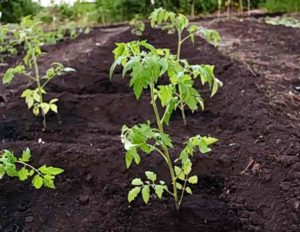
Drugs inhibitors of vital activity of pathogenic microorganisms have a different origin. From this factor depends on their efficiency and speed, as well as the waiting period.
- Contact substances-fungicides in contact with the vegetative mass of tomatoes remain on its surface, and in contact with pathogens, cause their death. Systemic fungicides from the groups of triazoles, imidazoles and morpholines have the ability to penetrate into the outer cells of tomatoes and seed shells, inhibiting the biosynthesis of components of the cell membranes of the pathogen.
- Substances of systemic preparations easily penetrate inside the plants, move through their vessels, protecting tomatoes from fungal infection. Systemic fungicides from etirimol and blackicidin groups, interacting with pathogens, produce an active metal that inhibits the growth and respiration of key pathogens for proteins. In most cases, systemic drugs are able to treat fungal pathogenesis, even in cases where the contact pesticide is simply impotent.
- Combined fungicide preparations are distinguished by the effectiveness of active substances in the fight against many diseases. Elements inhibit the uptake and synthesis of certain substances by pathogenic microorganisms at the cellular level. However, when used, such agents are characterized by an increased degree of danger.
Application procedure
Depending on the purpose, fungicide preparations are used for seed dressing, spraying of adult tomato bushes, and soil treatment.
The soil
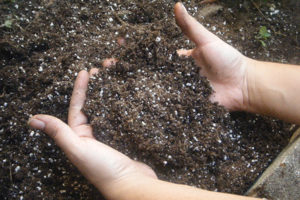
Microbial inhibitor preparations are necessary for cleaning the soil from pathogenic microorganisms developing in it when growing tomatoes in the same area every season. Preparations intended for treating the soil are applied to the soil in the form of a powder or a liquid solution before digging. In the process of making - living in the ground spores die. These substances are highly volatile, and therefore are recommended for use only in closed greenhouse structures.
Seeds
Inhibitors of the development of vital activity of pathogens, intended for presowing treatment of tomato seeds, eliminate the risk of plant disease in the future. The seeds are powdered with a fungicide powder or with a solution before being embedded in the ground. Processing eliminates the risk of damage to tomatoes by pathogenic microorganisms and pathogenic spores, which during development, will lead to the death of the entire crop.
Saplings
Substances-fungicides are necessary for the treatment of young tomato seedlings during the period of active growth. Preparations for spraying seedlings during the beginning of the growing season mainly have a prophylactic effect in order to avoid the defeat of pathogens, and also strengthen the immunity of plants.
Adult bushes
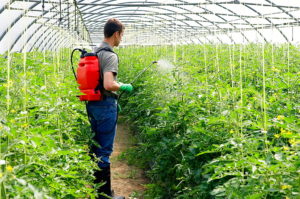
For adult plants, fungicides of systemic action are used, which can be used at different stages of tomato development. Such inhibitors of microorganisms can be both prophylactic and treating. Treatment of adult bushes with systemic fungicides does not depend on weather conditions, since such agents are not washed away with water. However, sudden changes in temperature can reduce the immunity of tomatoes after spraying and worsen the condition in the presence of the disease.
With regular spraying with the same drug, pathogenic microorganisms develop resistance. Therefore, treating tomatoes from diseases, it is necessary to alternate means-fungicides, conducting sprays, first contact, and after systemic preparations.
Recommended tools
The most popular fungicides and gardeners who used inhibitors against tomato diseases are the following drugs.
| Contact | Systemic | Combined | Preventive Biological |
| Copper sulfate | Vectra | Cabrio | Alirin-TAB |
| Ordan | Kvadris | Amistar | Albite |
| Hom | Oxy | Tattu | Hamair |
| Rovral | Disc | Ridomil Gold | Trihovit |
| Tiovit-jet | Impact | Comfit | Fitolavin |
| Abiga-PIK | Raek | Prestige plus | Glyocladin |
| Bordeaux mixture | Topaz | Profit Gold | Trichodermin |
| Bravo | Phytolavit | Chorus | Fitolavin |
| Vitaros | Fundazole | Spirit | Fitosporin-M |
| Maksim | Is fast | Teldor VG | Planriz |
| Bona forte | Pure color | Mikosan | |
| Thanos | |||
| Byleton |
Before you choose the necessary means-fungicide, you should accurately determine the disease and its stage. Before processing seeds or tomato bushes, study the information on the use and waiting time of the drug. When spraying any kind of inhibitor of infections and pathogens, use protective equipment, follow safety rules when working with chemicals.


